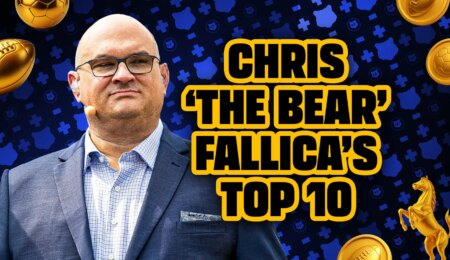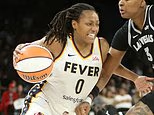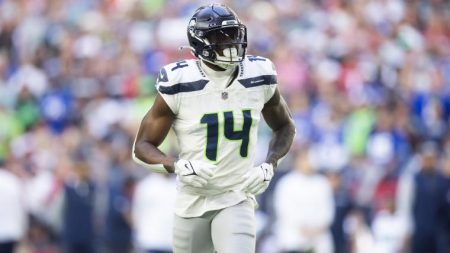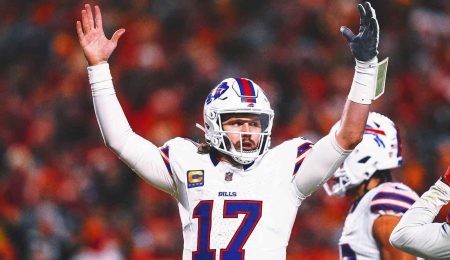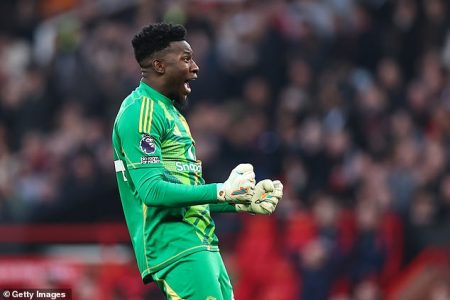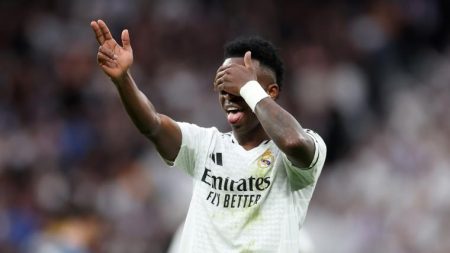The Revival of the Running Back in the NFL
What Saquon Barkley achieved in Philadelphia last season is nothing short of a renaissance for the running back position in the NFL. The Eagles signed him to a market-busting contract, and he more than justified it by leading the team to a Super Bowl championship and earning the NFL Offensive Player of the Year award. Barkley wasn’t alone in his success. Derrick Henry also excelled for the Ravens after joining as a free agent, and Josh Jacobs had an impressive first year in Green Bay. These performances were hoped to reestablish the value of running backs, a position that has been devalued in the NFL for the past decade. However, the reality is that the market might not shift as much as running backs would like to believe.
The Shifting Dynamics of the Running Back Market
Ravens general manager Eric DeCosta provided a nuanced perspective on the running back market at the NFL scouting combine. He likened the position to the stock market, noting that running backs were once the most critical players on the field. However, over the past decade, analytics have de-emphasized their importance. Last year’s performances by Barkley, Henry, and Jacobs highlighted their irreplaceable value, but the general perception still sees them as replaceable. This year’s free-agent class, led by Najee Harris, Aaron Jones, J.K. Dobbins, and Nick Chubb, doesn’t quite measure up to the exceptional talent and depth of last year’s group. Commanders GM Adam Peters echoed this sentiment, suggesting that last year was an anomaly due to the exceptional quality of available players.
Najee Harris: The Best of the Bunch
Najee Harris of the Steelers stands out as the most promising running back in this year’s free-agent class. Standing at 6’1" and weighing 242 pounds, Harris has never missed a game in his four-year career, a testament to his durability. He has consistently topped 1,000 rushing yards each season, ranking fifth in total yards over that span. Beyond his rush stats, Harris is an underrated receiver, averaging 45 receptions per season, including 74 as a rookie. His bruising style is reminiscent of Henry’s, making him a valuable asset for any contending team with a strong offensive line. Despite the overall market conditions, Harris’s consistent performance and durability could position him to command a contract similar to Barkley’s and Jacobs’s.
Aaron Jones: Overcoming the Crowded Market
Aaron Jones of the Vikings faced a crowded market last year, which limited his opportunities. After refusing a pay cut in Green Bay, he ended up signing a one-year, $7 million deal with the Vikings. Jones overperformed, achieving a career-high 1,138 rushing yards and catching 51 passes for 408 yards. Playing in all 16 games last season, he demonstrated his value and health. However, his history of not starting every game (only three times in eight NFL seasons) and his age (30) may still impact his market value. Despite these drawbacks, Jones’s recent success and relatively low risk compared to other available backs could make him an attractive option for teams looking to bolster their ground game.
J.K. Dobbins: Talent and Injury Risks
J.K. Dobbins of the Chargers is a 26-year-old with immense potential. Last season, he rushed for a career-high 905 yards and nine touchdowns in his first year with the team. However, his season was cut short by a knee injury, causing him to miss four games. This injury history, including previous knee and Achilles issues that limited him to just nine games over the previous two years, is a significant concern for potential suitors. Despite his talent and relatively low wear and tear (488 career touches), Dobbins’s injury risks will likely cap his guaranteed money. Teams may view him as a high-reward, high-risk option, willing to offer a shorter-term deal with fewer guarantees.
Rico Dowdle: Late-Blooming Potential
Rico Dowdle of the Cowboys had a mixed first season as the primary back, rushing for 1,079 yards and two touchdowns. His value became more apparent later in the season when the Cowboys leaned more on their rushing attack and Dowdle’s performance improved. In his first nine games, he averaged 10.3 carries and 44.7 yards. However, in his final seven games, he averaged 20.3 carries and 96.7 yards, suggesting he could be a top-tier back if given consistent opportunities. Dowdle’s youth (27 in June) and limited wear and tear (387 career touches) are positive attributes. However, teams may be cautious about committing significant guaranteed money until they see him handle a full load over a full season, which could limit his contract value.
Nick Chubb: A Question of Health and Form
Nick Chubb of the Browns faces a challenging market due to his recent injury history. Over the last two seasons, he has played just 10 games and rushed for 502 yards. His 2024 return from a serious knee injury was a heartening story, but he managed only 332 yards on 3.3 yards per carry in eight games. Chubb’s reputation as a high-yield back from 2019-2022, where he averaged 1,336 yards per season despite missed games, adds complexity to his value. At 29 years old, the risk of further injuries or a decline in form is significant. Given the market dynamics, Chubb’s recent injury could cost him a substantial amount of money, and he may have to settle for a one-year, lower-guaranteed contract.
The Future of the Running Back Market
The upcoming free-agent market for running backs in 2025 will be a test of the position’s perceived value. While last year’s success stories with Barkley, Henry, and Jacobs have raised hopes, the reality is that this year’s class is not as robust. Teams will be cautious, given the injury risks and the luxury of waiting until the draft to find potential replacements. Harris, Jones, Dobbins, and Dowdle each bring unique strengths and challenges to the table. The market will likely reflect these dynamics, with shorter-term contracts and fewer guarantees becoming the norm. Despite the challenges, the best backs in this class may still find a way to capitalize on their talents, though the financial rewards will likely be more modest.


